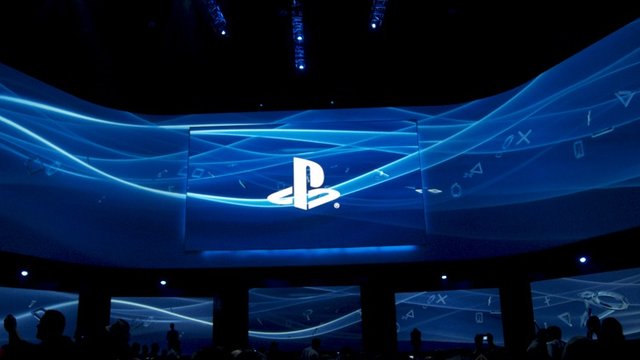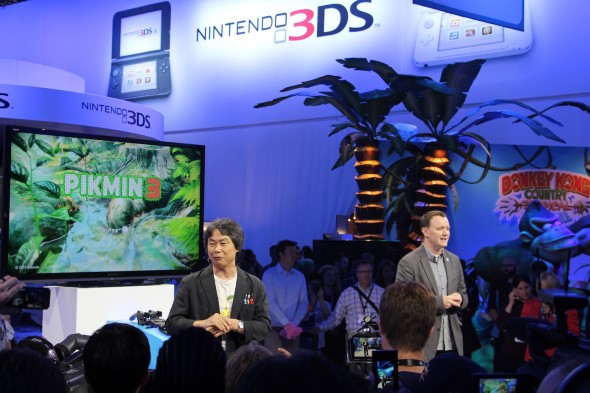The marketing battle for the hearts, minds and wallets of consumers this holiday has begun, and as the armies have taken the field we can analyze their strategies and initial positions. While the statements from Microsoft, Sony and Nintendo can provide clues to their strategies, how the companies chose to spend money at E3 is more revealing.
Microsoft led off the E3 week with a presentation at USC’s Galen Center. The presentation focused mostly on the Xbox One with two important exceptions: Introducing a new version of the Xbox 360 (with no pricing announced), and a version of World of Tanks for the Xbox 360, as well as some upcoming games available free to current Xbox Live members. Microsoft used the bulk of the presentation to show a series of exclusive games coming to the Xbox One, with some mention of additional features of interest like the integration of Twitch TV to allow easy sharing of game content. The presentation closed with the release schedule (November) and the price: $499.
Microsoft did what it set out to do: Show off some of the best games headed to the Xbox One, and drum up excitement and interest in the hardware and software. The price point wasn’t really a surprise, but it was greeted with silence as the audience thought about the implications. Microsoft didn’t go into details of what the Xbox Live service would look like or cost on the Xbox One. Details about used games and connectivity requirements for the Xbox One had been posted prior to E3 on a special web site Microsoft set up, with the obvious hope that those issues would be forgotten in the excitement over the games being shown.

Sony’s presentation strategy was very different than Microsoft’s. For starters, Sony invited attendees to the event two hours early, and gave them free food (from gourmet food trucks) and free beer. Nothing like some free beer to put an audience in a receptive mood. The presentation itself was very different than Microsoft’s in a number of important ways. Yes, Sony spent the bulk of the time showing off new and exclusive games to generate excitement, just as Microsoft did. The main difference was that Sony led off with the PS Vita, describing the new titles coming and the underscoring the handheld’s utility with the PS4. It was, effectively, a relaunch of the PS Vita.
Next Sony showcased a number of strong PS3 titles that are arriving this year before moving on to the PS4. In its presentation, Microsoft spent very little time on the Xbox 360, though its fall lineup is scarcely less impressive than Sony’s PS3 lineup. Sony also took pains to highlight its movie and music divisions and how they would bring media content to the PS4. Ironically, Microsoft did essentially the same thing in its May 21 Xbox One event and was panned by gamers for it; here the gamers seemed happy to hear about non-game content.
Sony made sure in its presentation that Microsoft’s hopes for no further questions on used games and connectivity would be dashed. Sony declared there would be no restrictions on used games and no connectivity requirements for the PS4. Unlike Microsoft, Sony went in to some detail about how its PlayStation Plus program would work for the PS4, announcing that members will get a free version of Drive Club for the PS4 as the start of a series of free games. At the same time, Sony announced that a PlayStation Plus memebership would be required for multiplayer online play, a change from the PS3. Capping off the event, Sony announced the PS4 price: $399, undercutting Microsoft by $100.
While much has been made at E3 and afterwards of the rival showings, and Sony’s initial PR advantage, it’s easy to overlook some important facts. First of all, the Xbox One and the PS4 are virtually identical in the broad sense, with the same basic architecture, I/O, and storage. The primary difference is the inclusion of Kinect with the Xbox One; on the PS4 you’ll have to buy the Eye for $60 to get some of the same functionality. The more powerful Kinect hardware easily accounts for the price difference.
The real differences between the two consoles will come with services and policies, as well as the lineup of exclusive games. While right now Microsoft’s policies are not as popular as Sony’s, it’s perfectly possible to change policies with a single press release. Microsoft can do that at any time — as could Sony. There’s also the persistent rumor that Microsoft may offer a subsidized package for the Xbox One, with an ISP offering a discount on the hardware if you sign up for a long-term contract. That could mean a chance to get an Xbox One for $399, or even $299 or less up front. That could completely change the value equation.

Finally, Nintendo had a non-event event; instead of inviting the press and others to the Nokia Theater for an event like Microsoft’s or Sony’s, Nintendo brought people into its E3 booth. The idea was to avoid talking at length, and instead give the press a chance to get their hands on the games. Hardware (whether the Wii U or the 3DS) was de-emphasized to the point of invisibility; the games were front and center. The decision made sense on several levels. Nintendo can avoid direct comparisons of its presentation with Sony or Microsoft, because Nintendo didn’t really have a presentation. There was no news to announce about hardware, so why spend time talking about hardware The weakness of the Wii U is currently its lack of compelling games, and Nintendo demonstrated that there are some very desirable games coming soon for the Wii U. The fact that there was only a handful of games compared to other platforms let Nintendo focus on presenting each title to its best advantage.
The company booths echoed the presentations. Microsoft’s booth was all about the Xbox One, with the Xbox 360 relegated to a corner area. Sony’s booth spread its signage and game demos equally between the PS Vita, PS3, and PS4. Nintendo’s booth focused on games, devoting the most space to the key games coming for the Wii U. Here we see what the fall strategy will be: Nintendo will focus on a few key games, Sony will try to sell all three of its platforms, and Microsoft will focus most of its attention on ensuring the Xbox One gets off to a good start.
The actual spending involved for each company will make a huge difference as to the outcomes. Microsoft is rumored to have spent over $400 million launching Windows Phone 7, so a marketing spend on that scale is certainly possible. Nintendo has plenty of cash to spend, but will find itself constrained by Iwata’s promise of 100 billion yen in profit for the fiscal year; the company will want to get a quick return on any marketing spending to achieve that goal. Sony is recovering from its financial troubles, but it still isn’t swimming in cash, so the marketing spend will probably be closely scrutinized.
Predicting which console will sell more this holiday is a fool’s game. We still don’t know the final pricing of all hardware and services from all players; there may be more bundles or deals (or price cuts for the Wii U) yet to come. We also don’t know the scope or scale of the marketing campaigns planned. Finally, all of these companies are in it for the long haul; whether one company or another sells a million more units this Christmas isn’t critical. Each manufacturer needs to establish a good user base and continuing sales momentum, and more importantly to keep that going in the slower times of February and March of next year. It’s perfectly possible that all three console makers can ‘win’ this Christmas on those terms; it’s not a zero-sum game. Keep that in mind as you watch the marketing battle unfold.

